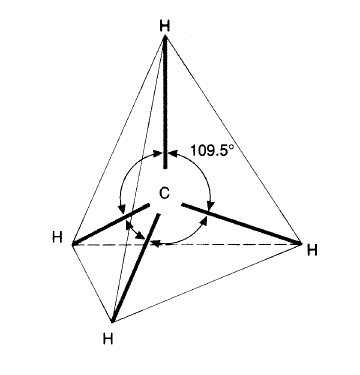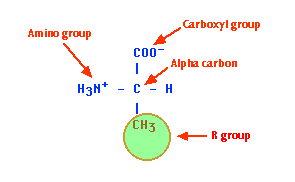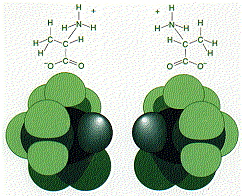
In three-dimensional (3D) space, the four covalent bonds of carbon atoms point toward the corners of a regular tetrahedron. The molecule represented to the right is methane (CH4).
Whenever a carbon atom has four different structures bonded to it, two different molecules can be formed.

EXAMPLE: the amino acid alanine. Bonded to its alpha carbon atom are:
If you orient the molecule so that you look along it from the COO- group to the NH3+ group, the methyl (R) group can extend out
to the left, forming L-alanine(shown below on the left) or to the right, forming D-alanine (on the right).

Although they share the same chemical formula, they are not interchangeable any more than a left-hand glove is interchangeable with right-hand glove.
19 of the 20 amino acids used to synthesize proteins can exist as L- or D- enantiomorphs. (The exception is glycine, which has two (indistinguishable) hydrogen atoms attached to its alpha carbon).
L amino acids are used exclusively for protein synthesis by all life on our planet. (Some D amino acids are used for other purposes.)
Does it really matter? Yes.Enantiomers are also called optical isomers because their solutions rotate the plane of polarized light passing through them. If one enantiomer rotates light in the clockwise direction, a solution of the other enantiomer will rotate it in the opposite direction.
| Welcome&Next Search |